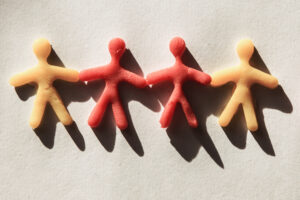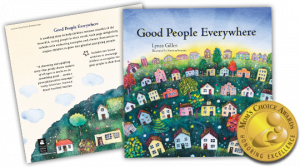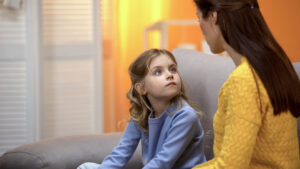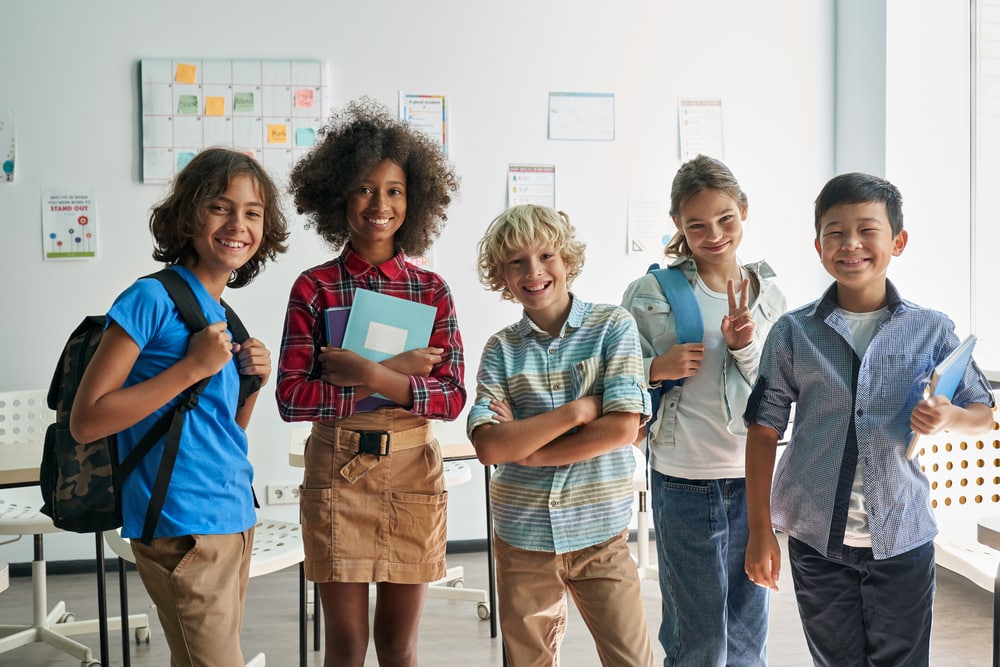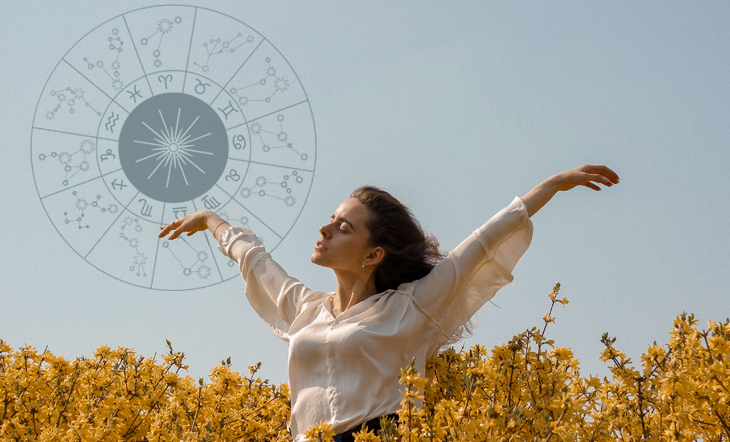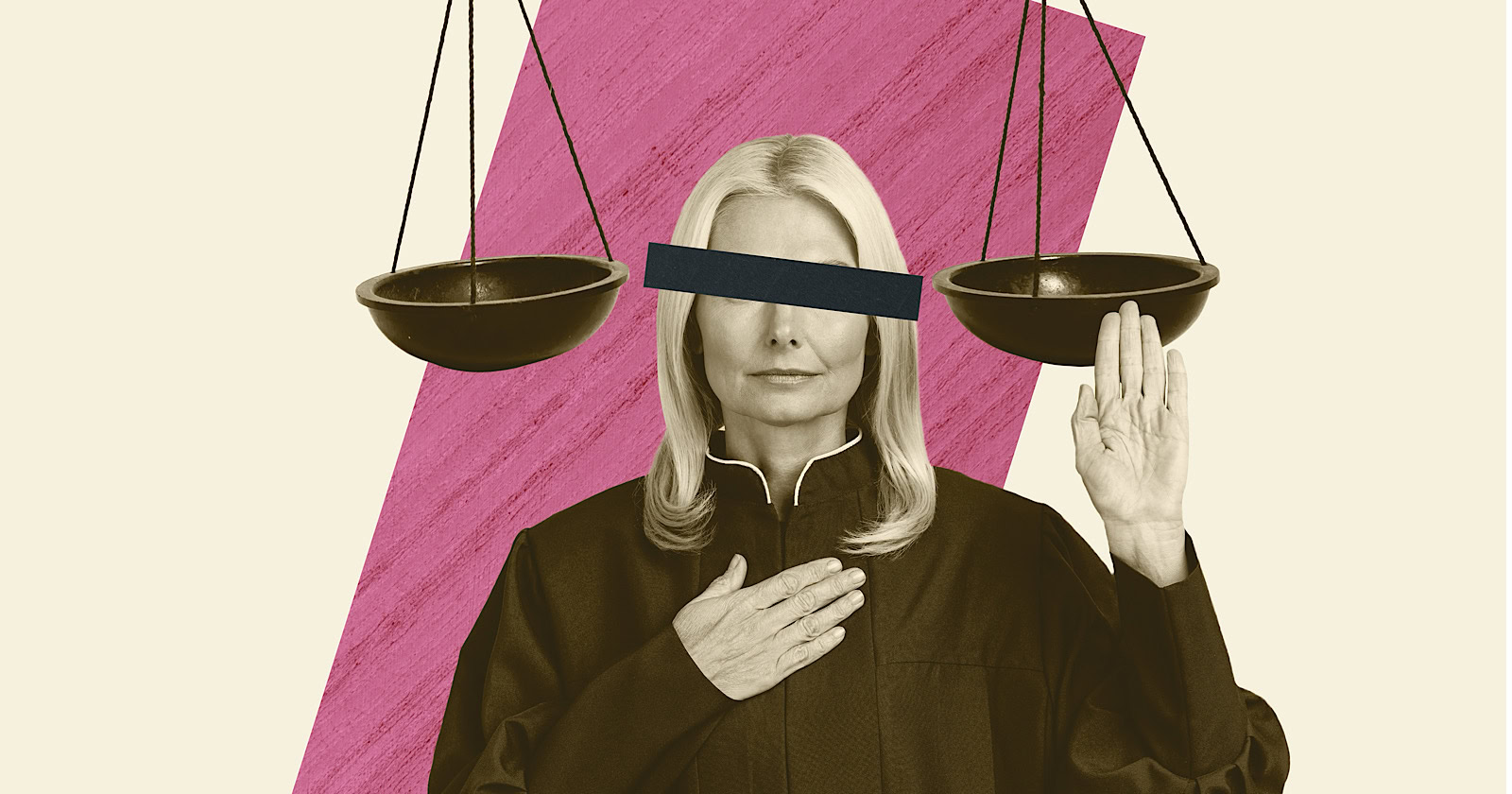Yoga Calm Fundamentals: 9 Tips for Talking with Children about Tragedies
If you’re GenX or a Boomer, you probably remember growing up with at least some fear of nuclear war. The threat reverberated throughout the media. At particularly tense times, Cold War conflict dominated the news cycle – just as...
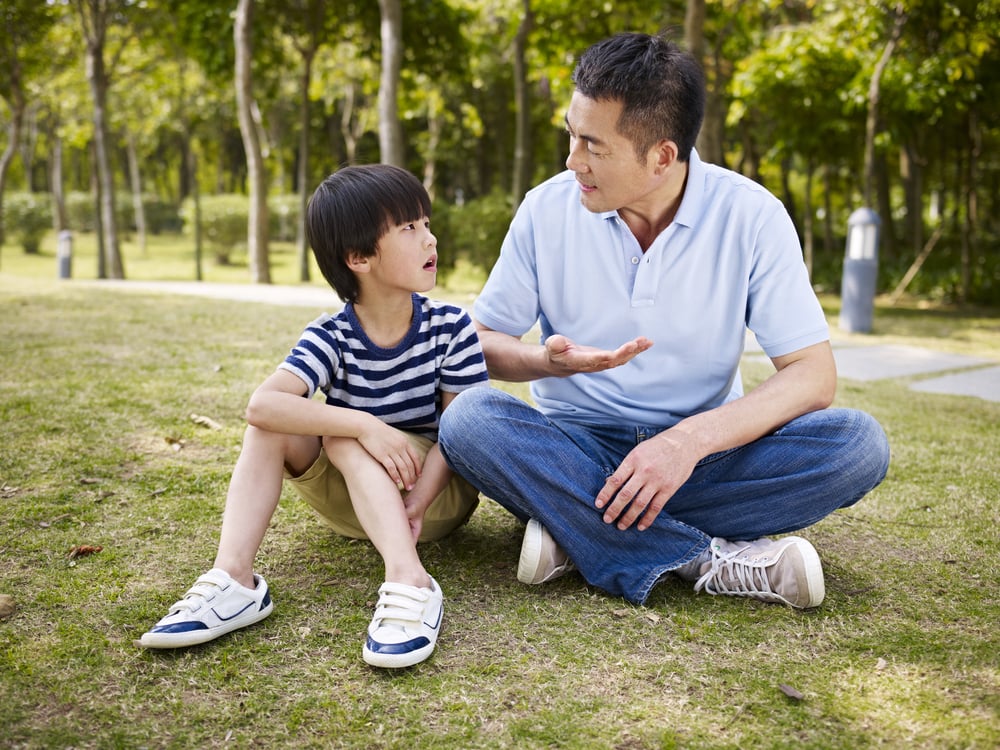
If you’re GenX or a Boomer, you probably remember growing up with at least some fear of nuclear war. The threat reverberated throughout the media. At particularly tense times, Cold War conflict dominated the news cycle – just as hostilities between Israel and Hamas dominate now.
Imagine what it must be like for young children, especially with ramped up rhetoric about the very real threat of a third World War – and all this on top of events like the mass shooting in Maine.
It’s a lot for little ones to take in. Events like these can generate limitless anxiety, fear, dread, and other helpless feelings. How should we respond? What can we do to help children process their feelings about such events? To help them still feel safe and secure? To nurture hope?
We’ve blogged about this a good deal over the years. In fact, the post below is one we published just 6 months ago. Although it was written in response to a spate of mass shootings, the tips offered are no less relevant to current global events…
What do you say to a child when yet another act of wild violence dominates the news? How do we help them make sense of the strange and troubling scenes, and so many people saying “never again” even as nothing much seems to change?
Working Toward a Positive, Strong, Affirming, & Nurturing Alternative
There are no simple solutions. We need to address the complexity of the problem. We need to understand the roots of this epidemic. Certainly, “too many guns” is a problem. Sensible gun control would be most welcome – not just for reducing mass killings and homicides, but suicides, too, which usually outnumber all other gun deaths each year.
But this isn’t just a “guns or no guns” issue. Many factors contribute to the kinds of shootings that have become an all too familiar part of American life. As educators, counselors, clinicians, and parents, we must work together to identify and address the underlying causes of violence. These include (but are hardly limited to) things like
The lack of affordable mental health care for families. Insufficient support in the schools, many of which lack enough counselors and social workers. Contributing factors such as media violence, violent video games, and isolation. The stressful environments in our schools and workplaces. Increasing factionalism, with more people seldom interacting with others who aren’t just like them. The tendency to hyperbole in social discourse – where every bad thing is the worst thing ever and every bad person is the worst person ever – which primes us to react with more extreme emotions, fueling what some have called our Age of Rage.Equally important is helping children develop positive habits and find appropriate ways of releasing anger and tension. This requires time, effort, resources and, above all, commitment. Acquiring skills and solutions is a long-term, ongoing process.
Just as our problems with a violent culture did not emerge overnight, neither will a positive, strong, affirming and nurturing alternative.
The Reassurance of Community
But we need that alternative. Badly. Even the basic act of working to create it provides a powerful counterpoint to destructive forces. Working together provides us an opportunity to recognize and understand that for all that divides us, there is also much that still binds us. Nurturing that can accelerate the pace of change.
Even so, we still have to deal with the fact that we live in a world in which violence – and the vicarious trauma it can cause – routinely occurs. Those events can make the world seem a much scarier and more threatening place than it is in our day to day existence, especially for young children. They want and need a sense of safety and security that events like these – and our reactions to them – seem poised to snatch away.
That’s one of the main reasons why Lynea wrote her first book for children, Good People Everywhere: to help soothe them in troubling times by reminding them that the world really is a good place and there are many people to help us when bad things happen.
In a world of 24/7 news coverage, where every bad event is amplified, it’s more important than ever, says Lynea, to focus on what’s being done to help the situation. Children need to be taught, reminded, and reassured that for every disaster or tragedy, multitudes come together to help one another.
Some may even say that as bad as tragedies are, they remind us of our common humanity. For all their power to hurt, they also have power to bring out the best in human nature.
Fortunately, we don’t need the horrific to do this.
9 Tips for Talking with Children about Tragedies
By making a practice of recognizing the good in life and looking for the good things people do in the world on an ongoing basis, we prepare our children for the inevitable challenges and losses life brings. Within this healthier worldview, the loss of a pet, the death of a grandparent, a natural disaster, or even a mass shooting can be understood.
And with this perspective, we are more likely to focus on how we can help others in times of need.
Here are some more ways you can help children during tragedies:
As much as possible, stay calm. Don’t go into a hyper-alert state. Answer their questions directly but don’t elaborate. Adults often tell more than a child is ready to hear or able to understand. Answer only the question they ask, then wait to see if they have more questions. In her counseling work with children, Lynea often explains that there are many ways to get sick: Some people get sick in their stomach or lungs or heart; some get sick in their minds. When people have an illness that affects their minds, they don’t think well. It’s sad for everyone when this happens. The child may ask how someone can get an illness in their mind. You can say that we don’t always know, but if we take good care of our bodies, minds, and hearts, we can help prevent it. You can also tell them that there are many doctors who are helping people heal and that we continue to find new ways to help people who get sick. Acknowledge their feelings of sorrow and confusion, then remind them that people are strong and resilient, and that right now many good people are helping those who are hurt. Most of the time we can prevent bad things from happening, but sometimes we can’t. What we can do, always, is help people heal from these events. Tell the children about specific ways people are helping: the first responders, doctors and nurses who care for the wounded, counselors who help people with their grief, people who hold prayer vigils…. These are ways we help each other heal. It’s okay for your child to see you cry. You can tell young children that you are washing the sad feelings out of your heart. You can tell older ones that crying is one of the ways our bodies help heal us. It’s important, though, to let your children know that you are strong and don’t need them to take care of you. You can model how to have compassion and sorrow, and also be strong. In fact, people who release their emotions are healthier than those who bottle them up. Limit the amount of time you watch the news or talk about the event. The news is often reported with a tone of emergency, and children pick up on this. It can frighten them. If you talk about the event in front of your children, spend as much time speaking about the healing efforts as you do about the tragedy. Choose calming, grounding activities to help your child come back to a feeling of safety. The questions may keep coming for several days or even months. You may see young children acting out the scenario in their play. This is how they process. Allow the play and continue to remind them about the healing efforts. If your child seems unable to be comforted, seek help from a professional counselor.Here’s more from Lynea in a conversation she once had on KATU’s morning show:

 ShanonG
ShanonG 
